Seven Viral Books About Pathogens
Photo by Timm Schamberger / Stringer / Getty. Thumbnail photo by Andreas Rentz / Getty. Books Lists Pathogens
Pathogens are among the most ancient, numerous and powerful forms of life (and near-life) on the planet. These replication machines possess the power to shape not only our societies, but all life on earth. From the benign to the lethal, viruses, bacteria, prions and other disease-causing agents are the perfect literary subjects.
Here are seven reads exploring pathogens where science, hope and horror intersect.

 1. Biohazard by Ken Alibek and Stephen Handelman
1. Biohazard by Ken Alibek and Stephen Handelman
Biohazard is a chilling portrayal of the biopreparat, or the Soviet Union’s biological weapons program, from a man who would know it well. Alibek was the agency’s deputy chief from 1988 to 1992, at which point he defected and moved to the U.S. Alibek’s book sheds light on the impressive and horrifying work done by one of the world’s most extensive bioweapons programs, a vast web of labs stretching from the Sea of Japan to the Baltic. Their grim achievements include weaponizing Marburg—a vicious relative of Ebola—and creating custom made “chimaera” bugs.

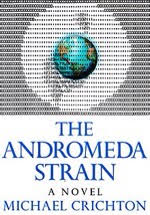 2. The Andromeda Strain by Michael Crichton
2. The Andromeda Strain by Michael Crichton
The novel which made Michael Crichton—and the possibility of death by super-pathogen—famous, The Andromeda Strain follows a team of scientists as they race to uncover the workings of the book’s titular microbe. Crichton’s portrayal of a decimated Piedmont, Arizona, will likely never leave your mind’s eye. Many of the town’s citizens die of near-instant blood clotting, while those who do not tend to commit strange suicides. Crichton’s depiction of the havoc a disease can wreak has haunted readers for decades.

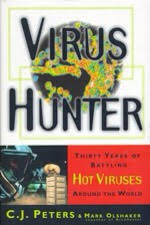 3. Virus Hunter by C.J. Peters and Mark Olshaker
3. Virus Hunter by C.J. Peters and Mark Olshaker
Peters has chased down, studied and stymied viruses in both military and civilian capacities as a member of the United States Army Medical Research Institute of Infectious Disease and the Center for Disease Control. Virus Hunter details his remarkable career, from his years as a student at Johns Hopkins University and his time handling deadly diseases in the Panama Canal Zone to dealing with a strain of Ebola in suburban Washington, DC and confronting a mystery outbreak in the American Southwest.

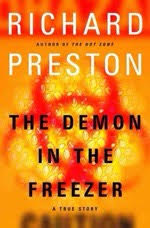 4. The Demon in the Freezer by Richard Preston
4. The Demon in the Freezer by Richard Preston
Few nonfiction books can impress upon a reader the sheer horror of what a deadly virus can do like The Demon in the Freezer. Officially relegated to two freezers in Russia and the United States, smallpox exists today mainly as an abstraction, a biological haunt hovering over society’s shoulder. The Demon in the Freezer, however, brings smallpox’s power into focus—a virus considered so dangerous to humanity it has been both worshiped as a god and eradicated from the earth save for those two spots. Preston’s book provides not only a fantastic history but a fearful question: Why keep it around at all?

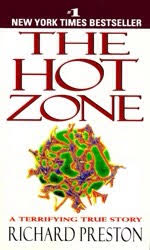 5. The Hot Zone by Richard Preston
5. The Hot Zone by Richard Preston
This is the book which will keep you up at night. A harrowing account of the discovery of Ebola in a monkey house outside DC, The Hot Zone has served as many readers’ introduction to the very concept of biosafety level 4—the most dangerous—pathogens themselves. Featuring a who’s who of virologists, scientists and biocontainment specialists and gruesome but never ghoulish accounts of what viruses can do to their human hosts, The Hot Zone and its marvelous prose conflates science and thrilling story.

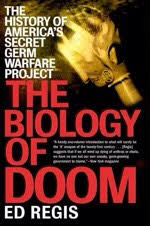 6. The Biology of Doom by Ed Regis
6. The Biology of Doom by Ed Regis
From World War II until 1969, the United States had a biological weapons program of its own to counter the Soviet threat. Centered in Fort Detrick, Maryland, the U.S. program cranked out unthinkable amounts of anthrax—tested, shockingly, in open air on American soil—and released stand-in diseases at sea. Regis peppers the book with insights into the British and Japanese programs as well, painting a picture which ends with a surprising ray of hope: it is from this wartime effort to kill that the modern techniques of biocontainment, wherein we expand our efforts to protect, were developed.

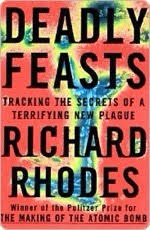 7. Deadly Feasts by Richard Rhodes
7. Deadly Feasts by Richard Rhodes
Rhodes’ pathogen of choice is a twisted, rogue protein known as a prion. While the organism may not be familiar, the diseases it causes are: Creutzfeldt-Jakob disease, kuru and bovine spongiform encephalopathy, better known as mad cow disease. Prions are harder to kill than other pathogens, as they are resistant to many common forms of disinfectant, and the diseases they cause destroy that which makes us most ourselves—the brain. The book’s title comes from the prion’s connection to food; both kuru and mad cow stem from cannibalism.
B. David Zarley is a freelance journalist, essayis, and book/art critic based in Chicago. A former book critic for The Myrtle Beach Sun News, his work can be seen in Hazlitt, Sports Illustrated, The Chicago Reader, VICE Sports, The Creators Project, Sports on Earth and New American Paintings, among numerous other publications. You can find him on Twitter or at his website.